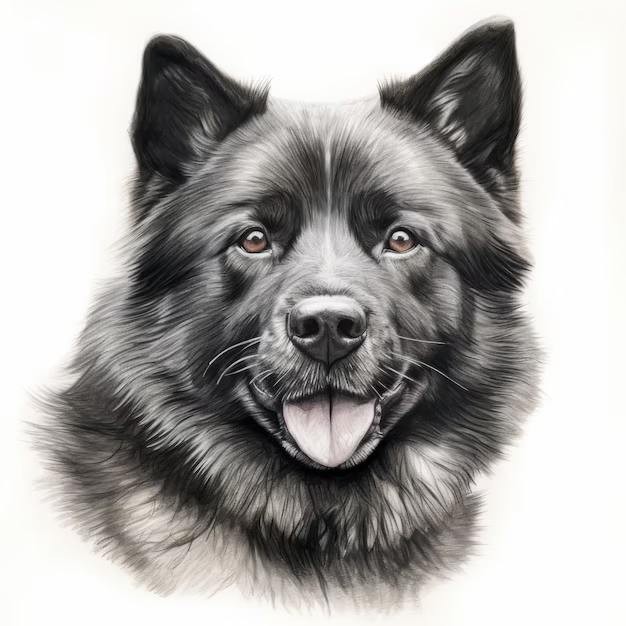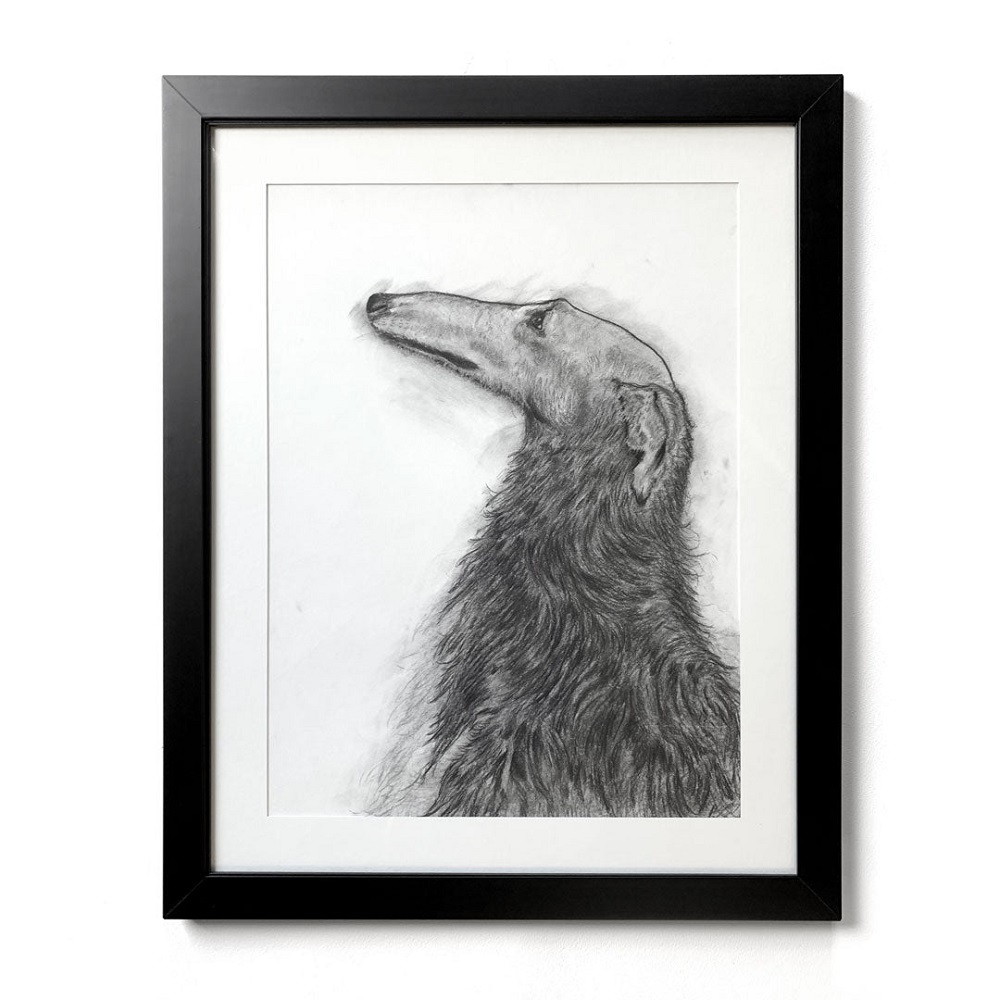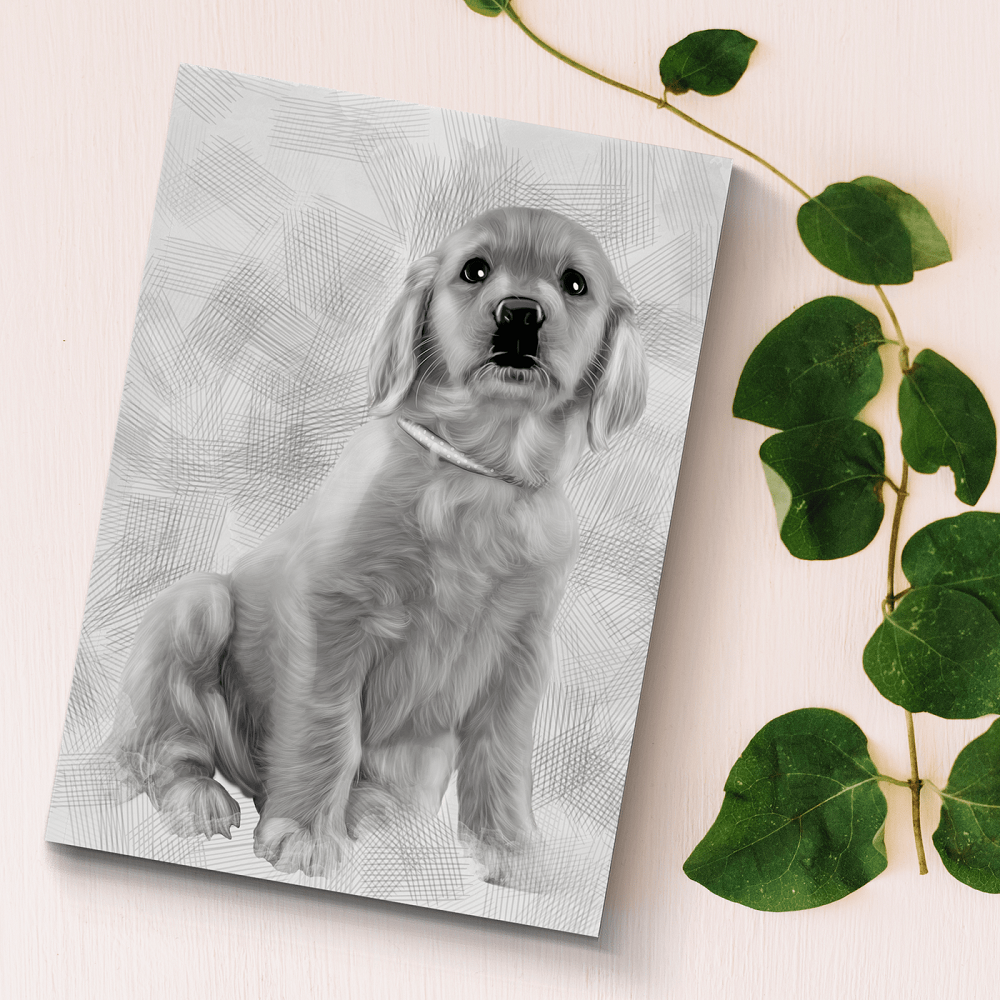Charcoal drawings capture the essence of their subject matter with stark contrasts and subtleties of tone. For artists, portraying beloved animals like dogs in charcoal is not just an exercise in technical skill, but also an exploration of emotion and character. This article delves into the world of black and white charcoal dog drawing, opening up the intricacies of the medium and the profound emotional depth it can evoke when capturing the essence of man’s best friend.
Beginning with the Basics
Understanding Charcoal as a Medium
Charcoal stands out for its ability to create rich blacks and a range of grays that are unmatched by pen or pencil. It can be both forgiving and unpredictable, making it an ideal medium for expressing emotion. By understanding its properties and experimenting with its potential, artists can employ charcoal to create dynamic, soulful representations of dogs, capturing their every mood and movement.
Preparing for Your Dog Drawing
Starting a charcoal dog drawing requires a bit more than simply grabbing a stick of charcoal. Select the right paper—one that has a good tooth to grab the particles—choose your charcoal type (vine, compressed, or pencil), and gather blending tools. Having reference photos or even your pet at hand will guide your composition and ensure accuracy in the portrayal.

Capturing the Subject’s Essence
Drawing the Outline and Proportions
Begin by lightly sketching the outline and ensuring correct proportions of the dog’s anatomy. Use loose, confident strokes to block in the main forms. At this stage, concentrate on the dog’s stance and the personality you want to express. A well-proportioned outline sets the foundation for a successful drawing.
Emphasizing Character Through Details
Moving beyond the basic outline involves adding details that enhance your subject’s character. Pay special attention to the eyes, ears, and nose—key features that convey expression. Subtle shading around these areas can help bring the canine’s emotions to the forefront, whether it be a soft glance or a playful sparkle.
Utilizing Light and Shadow
The Role of Contrast in Charcoal Drawing
Strong contrast is the heart of charcoal drawing and defines the form of your dog. Identify the light source and emphasize the contrasts between the light and dark areas. High contrast will add drama and focal points, whereas low contrast will create a softer, more uniform look.
Shading Techniques for Realism
Utilize different charcoal shading techniques like hatching, cross-hatching, and blending to give your charcoal dog drawing depth and life. By varying pressure and using blending stumps or your fingers, smooth transitions between shades can achieve a realistic fur texture that’s tangible to the viewer.
The Emotional Impact of Monochrome
Exploring the Emotive Power of Black and White
The absence of color opens up a world where shape, texture, and value speak volumes. A charcoal drawing can resonate emotionally, leveraging the stark simplicity of black and white to portray the raw, unfiltered essence and emotions of the dog. This purity can make monochrome drawings deeply personal and evocative.
Harnessing the Mood with Tonal Values
The carefully controlled use of tonal values can set the mood of the artwork. Dark, intense shadows often convey a sense of mystery or solemnity, while brighter, softly shaded areas suggest gentleness and approachability. The emotional narrative of your charcoal drawing will be largely dictated by these choices.

Exploring Creative Expression
Adding Your Artistic Flair
As you grow more comfortable with the medium, infuse your charcoal dog drawings with personal flair. This could mean stylizing certain elements, playing with abstraction, or introducing imaginative components. Your artistic voice is what makes each piece uniquely impactful and a reflection of your creative vision.
Dynamic Composition and Perspectives
Experiment with different compositions and perspectives to create more dynamic drawings that tell a story about your canine subject. Whether it’s a close-up of the face or a portrayal of the dog in motion, dynamic compositions can create a strong emotional impact and reveal the dog’s character in unique and interesting ways.
Refining Your Technique
Mastering Control Over Charcoal
Control is crucial when working with a medium as responsive as charcoal. Practice mastering its application to get just the right touch—from pressing hard for deep shadows to using a lighter hand for highlights. The varying pressure levels and angles of the charcoal piece can yield a wide array of textures and tones, communicating the softness of fur or the hardness of claws.
Overcoming Challenges in Detail Work
Detail work in charcoal can be tricky due to its often broad and blunt application. To depict the finer features of a dog, such as whiskers or the texture of fur, use sharper tools like charcoal pencils or even a kneaded eraser to ‘draw’ in lights by removing pigment. These precise instruments allow for a meticulous approach that enriches the drawing with lifelike detail.
The Narrative in Negative Space
Utilizing Negative Space Effectively
In charcoal drawing, negative space is everything that’s not the subject, and it’s a powerful tool for creating emphasis and balance. Use the untouched areas of the paper to create shapes that contour the form of the dog. This technique can be particularly dramatic in charcoal, drawing the viewer’s eye to the intended focal points and adding to the narrative of the composition.
Finding Balance Between Subject and Environment
Balance your dog within its environment by considering the negative space in your composition. Whether you locate your subject in a detailed scene or against a stark background, the interplay of light and dark areas supports the overall harmony of the piece. It’s not just about the figure; it’s also about how the figure fits into the bigger picture.

The Sorcery of Suggestive Strokes
Implied Textures and Forms
Sometimes, what’s left unsaid can be as powerful as what’s explicitly depicted. Use suggestive strokes to hint at textures and forms without fully rendering them. This technique not only adds a sense of movement and leaves something to the imagination but also directs focus to the more detailed areas of the drawing.
The Elegance of Simplicity
In charcoal art, less is often more. Embrace the elegance of simplicity by focusing on essential details that define the dog’s character. Let viewers fill in the gaps with their imagination, creating a more interactive and personal experience as they engage with the artwork.
Finishing Touches
Finalizing with Finesse
As you complete your drawing, step back to assess the overall impact. Making fine adjustments to the darkest darks and lightest lights can help to fully realize the form and depth. Add the final touches by sharpening edges, refining details, and ensuring there’s a balance between the detailed and looser parts of your drawing.
Sealing Your Work
To preserve your charcoal dog drawing, apply a fixative spray that will prevent smudging. This final step ensures your work remains as you intended, safeguarding the emotional depth captured within the strokes for years to come.
Charcoal dog drawing is a medium rich in emotional depth, capable of portraying the complex spirits of dogs in a way that color often cannot. Through understanding and mastering the characteristics of charcoal, artists are able to capture not just the visual likeness but also the essence of their canine subjects in striking black and white. The dance of light and shadow, the play of contrast and texture, and the personal touch of the artist come together in each piece to tell an emotional story. In every soft gradient and sharp line, the personality of the dog shines through, creating a heartfelt connection between the viewer, the subject, and the artist.